”The arrival of the Spanish seemed a liberation to the people under Aztec rule. Their final struggle was a form of suicide, as we can gather from all the existing accounts of that grandiose and astounding event. The gods had abandoned him. The great betrayal with which history of Mexico begins was not committed by the Tlaxcaltecas or by Montezuma and his group: it was committed by the gods. No other people have ever felt so completely helpless as the Aztec nation felt at the appearance of the omens, prophecies and warning that announced its fall…. “Indian . . . cyclical conceptions of time…. Time for the Aztecs” as with all indiginistas was “a substance, or fluid perpetually being used up….But time — or more precisely, each period of time– was not only something that was born, grew up, decayed and was reborn. It was also a succession that returned: one period of time ended and another came back. . . . the internal conclusion of of one cosmic period and the commencement of another. The gods departed because their period of time was at an end. . . . Aztec deities express a duality whose traditions correspond to “the contradictory impulses that motivate all human beings and groups. The death-wish and the will-to-live conflict in each one of us.” ( Octavio Paz )
How then should Montezuma prepare for the coming of Quetzalcoatl? Should he do penance, or flee, or put an end to his life? But then what would become of his people? And could he be absolutely certain that Quetzalcoatl would, after all, return? But on this score, at least, doubt was soon to be silenced. During the first third of the doom-laden year One Reed, or more precisely on March 12, 1519, the fleet of Hernando Cortes anchored off Tabasco. The Spaniards had come to Mexico.
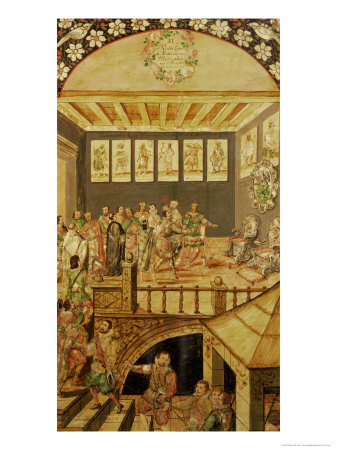
Miguel Gonzalez. The Conquest of Mexico:Visit of Hernando Cortes (1485-1547) to Montezuma (1466-1520) in 1520
Hastily, the watchers whom Montezuma had posted all along the coasts of his dominions sent their long awaited news to the Emperor. At the very moment when the white god Quetzalcoatl was most expected from out of the east, he had in fact appeared. At last the terrible years of uncertainty were over. This of itself was momentarily sufficient to revive Montezuma’s spirits. He could now do something; he could act, instead of not merely waiting. He promptly dispatched messengers to meet and greet Quetzalcoatl-Cortes , bearing with them costly jewels and ornaments, including some that belonged to Quetzalcoatl himself and had been kept in readiness against his eventual return.
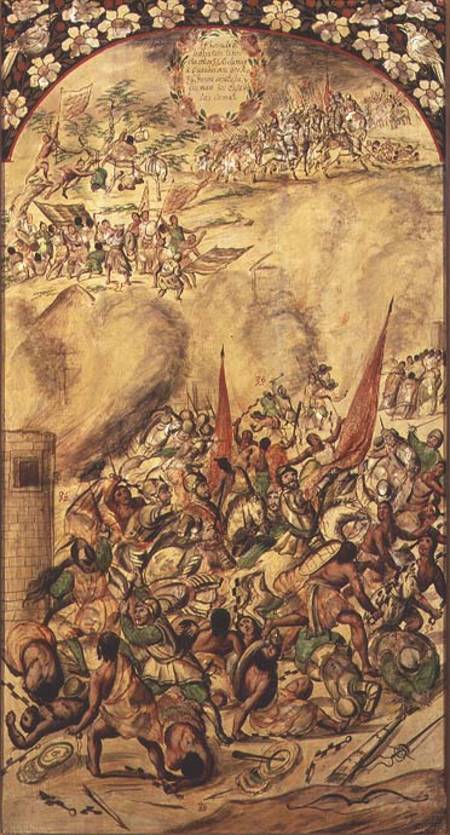
Conquest of Mexico: the Spaniards retreating, 1st July 1520, 1698 (oil on panel) by Gonzalez, Miguel and Juan
But when the messengers brought back their tales of the white faced visitors, and described the strange animals on which they rode, and the thunder of their guns, ”Montezuma feared very much , and was greatly dismayed”. Again, he made sacrifices and consulted his priests, but this time he decided to send out enchanters to deflect the unwelcome visitors from their path. He might still deter them, either by sorcery or by valuable gifts, from setting foor in Tenochtitlan. But the sorcery availed nothing, and the gifts merely strengthened the resolution of Cortes and his men to arrive at the court of so opulent a prince.
As they came closer and closer to the capital , joined on their march by warriors from subject races who had seized the occasion to revolt against the oppressive Aztec regime, the unhappy Montezuma lost heart, but resolved himself to await his enemies, avoid fleeing, finish with his doubts and resign himself to what should come afterwards. Que sera sera.
The question always arises as to what was going on in Montezuma’s mind that ingrained the notion of passive submission to a destiny he was led to believe was inevitable. What is intriguing is the phenomenon of Montezuma’s perceived powerlessness; a pre-programmed illusion that he was living a virtual experience in time and emotion. The imprint on his psyche would almost lead to the conclusion of an abduction phenomenon by Cortes as an extra-terrestrial and his meeting with Cortes a visionary experience and close encounter of the third kind. Cortes could have been seen as a human-alien hybrid intent on systematic interbreeding efforts between the natives and his alien intruders. Or, simply part of a phenomenon that might explain abduction with the Aztec culture’s widespread use of human mutilation.
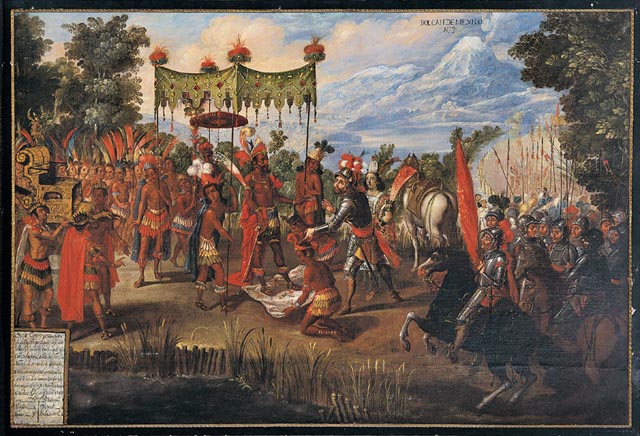
''Unknown artists "The Meeting of Cortés and Montezuma," from the
uest of Mexico series Mexico, second half of seventeenth century Oil on canvas''On November 8, 1519 Cortes and his band of less than four hundred Spaniards rode down the great causeway across Lake Texoco into the city of Tenochtitlan. This was the moment they had been waiting for since August, when they had turned their backs on the coast and marched resolutely into the interior of an unknown land, forcing their way through narrow ravines, crossing vast tracts of desert beneath a burning sun, toiling up steep mountain passes in the icy cold. Already those long months of hardship seemed to belong to legend.
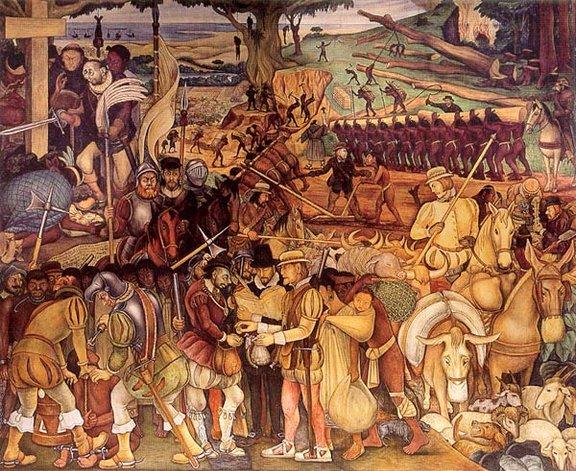
''The Spanish Conquest of the Aztec empire can be characterized as one of the saddest events in New World colonial history. Many of the conquistadores were more bent on plunder and domination than discovery and exploration; this was the percieved perk in the life of a 16th century european soldier. Hernan Cortez and his men crushed the Aztec empire and its people, and placed them into virtual slavery. The wars exacted a substancial toll, but it was the subsequent disease that was the worst. In some areas 80% of the population died from smallpox, of which the indigenous peoples had no natural immunity for. (Diego Rivera, 1951, Palacio Nacional in Ciudad de México).''
But to them nothing was more extraordinary in this whole extraordinary expedition than the reception they had been given along the route. The Indians had risen to greet them , and the great warrior Montezuma had sent, not troops but gifts. Now they were on the brink of their goal, and the city stood open to receive them. Was Montezuma then,leading them into a carefully baited trap? Great crowds had turned out to stare and Cortes and his men were apprehensive. But this was no trap. Cortes, knowing nothing of the divine role in which Montezuma had cast him, was alert to any hint of treachery. Entirely unable to comprehend why the aztecs should receive him in this fashion, but convinced that it was part of God’s inscrutable design, he therefore went forward in the certainty that somehow all would be well. He found two long processions of Aztec lords advancing to greet him; behind them came Montezuma himself, borne on a litter under a canopy. The litter stopped and Montezuma descended, stepping onto cloths that had been laid to prevent his feet from touching the earth. Supported by two kinsmen, he advanced towards Cortes, while the nobles averted their eyes in reverence.
Two men and two worlds, stood face to face. One one side an adventurer from the Spain of Charles V, the son of a poor hidalgo family; a brave, astute figure who represented in heightened form all the contrasting qualities of Renaissance Spain. he was curious and matter of fact, skeptical and deeply devout, convinced that nothing was impossible to man, and yet that nothing could be achieved except through the will of God. He waited to greet the ruler of a vast and wealthy empire of which Europe had never even heard, hoping that this empire might one day belong to Spain. Facing him was Montezuma II, supremely dignified at what was for him, as for Cortes, the greatest moment of his life.
There was about Montezuma a natural majesty, as befitted the absolute ruler of ten million subjects; and although his customary self-command had in recent years been undermined by superhuman happenings in the cosmic drama in which he found himself , his doubts were nearly all dispelled as he prepared himself with becoming reverence to greet the returning god.
, ca. 1931 Gouache on paper Jay I. Kislak Collection\’\'”]![rivera4 ''Diego Rivera Human Sacrifice Before Tohil [Illustration for Popol Vuh], ca. 1931 Gouache on paper Jay I. Kislak Collection''](/wp-content/uploads/2010/04/rivera4.jpg) Through Cortes Indian interpreter, Dona Marina, Montezuma’s oration was translated into something Cortes could understand, and yet not understand at all; the prophecy of the oral tradition, fulfilled that the throne would be filled by this visitor, returning to his land to claim his nation. It seemed to pass over the head of Cortes and he put a collar of pearls and glass beads round Montezuma’s neck and wished him to be of good cheer and fear nothing. Montezuma’s then brought two necklaces of red shells, from each of which hung eight golden shrimps and Montezuma placed them around Cortes’s neck. These necklaces were insignia of Quetzalcoatl. The white god had come back to his own.
Through Cortes Indian interpreter, Dona Marina, Montezuma’s oration was translated into something Cortes could understand, and yet not understand at all; the prophecy of the oral tradition, fulfilled that the throne would be filled by this visitor, returning to his land to claim his nation. It seemed to pass over the head of Cortes and he put a collar of pearls and glass beads round Montezuma’s neck and wished him to be of good cheer and fear nothing. Montezuma’s then brought two necklaces of red shells, from each of which hung eight golden shrimps and Montezuma placed them around Cortes’s neck. These necklaces were insignia of Quetzalcoatl. The white god had come back to his own.
Both Cortes and Montezuma would play out the roles to which they had appeared, resulting in Montezuma being willingly taken prisoner in his own capital; Cortes confident in the absolute certainty that the hand of Providence was with him. Cortes’s discussions with Montezuma about Christianity made no impression on Montezuma. Their two worlds were too far apart for any meeting of the minds. The Aztecs finally turned on the ruler whom they felt had betrayed them by inaction:a ruler perceived to have succumbed to a false vision of destiny, and he met his death by a stone thrown at him as he tried to pacify a mob.
Recoiling in horror from the blood-drenched world of the Aztecs, the Spanish conquerors were yet able to grieve for the ruler who had sacrificed thousands of victims. But if they admired the man, they had nothing but loathing for the system he represented. They would smash and destroy it, as Cortes had gone out one morning and smashed the idols in the great temple with an iron bar. In the end the Spaniards destroyed everything; gods, state and civilization, but in reality the conquest had been half achieved before they set foot on its soil. For when the first omens were seen, before Cortes had ever heard even speak of Mexico, Montezuma had already made his decision.
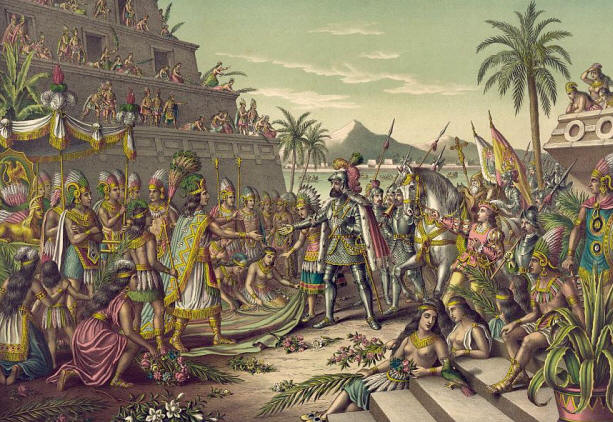
''Placing the Emperor in irons, Cortez caused seventeen of the men who had made the attack to be burned to death in front of the palace. Then Montezuma was compelled to acknowledge himself and his subjects vassals of Charles V., and Cortez forced the fallen monarch to give him gold to the value of $10,000.''
In his person the world of the Aztecs resigned itself in the prime of life to the necessity of death; and, with the measured ceremonial ever attendant upon the worship of its pitiless gods, proceeded to offer itself up, under its emperor’s direction, for the inevitable act of self-sacrifice.


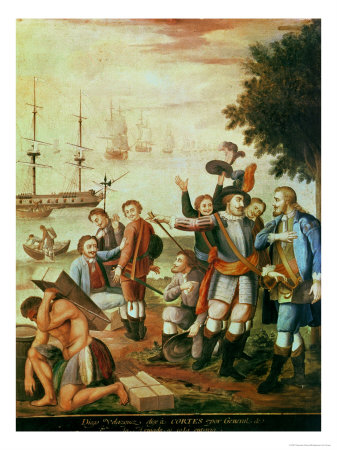
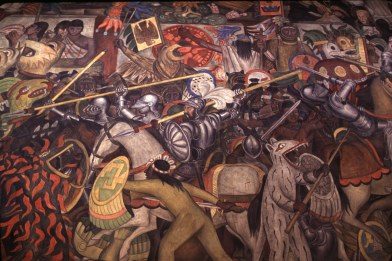
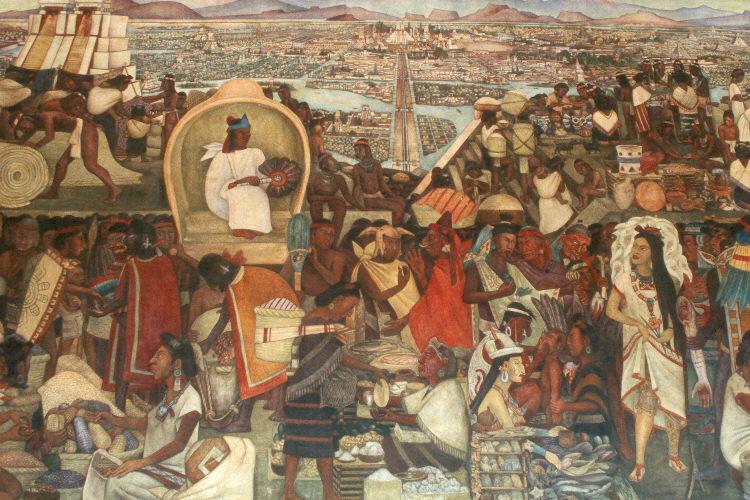
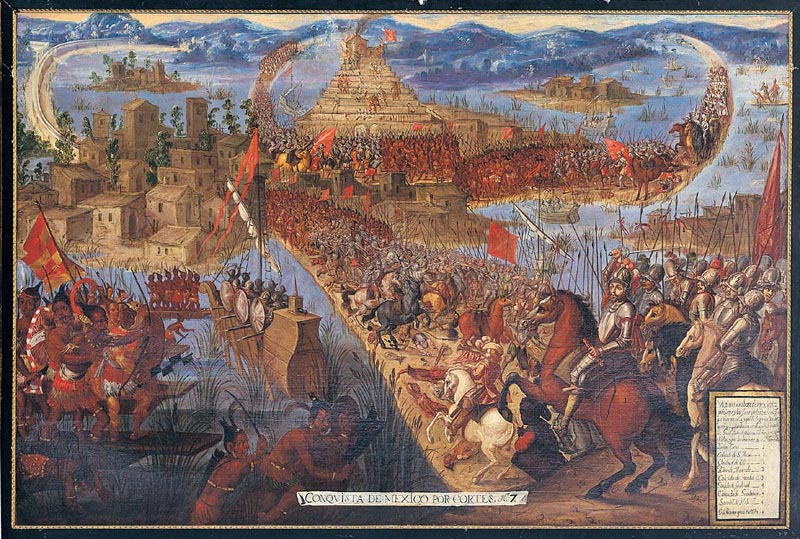



 COMMENTS
COMMENTS